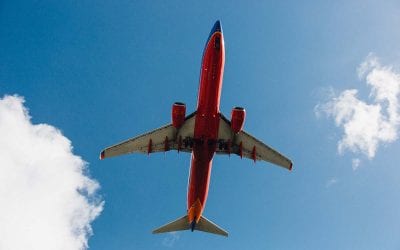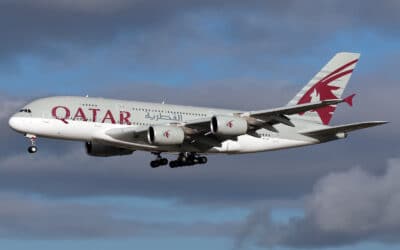I have suggestions to help you travel with technology more easily and reduce the amount of gear you need to keep them going.
 Travel with technology, particularly international trips, is often substantial these days. Supporting the technology without a large bag of chargers, adapters, wires, and other gear can be daunting.
Travel with technology, particularly international trips, is often substantial these days. Supporting the technology without a large bag of chargers, adapters, wires, and other gear can be daunting.
Some travelers are choosing to leave their tech devices at home, to go “unplugged,” to lighten their load, eliminate the tech prep time and to take a real break from everyday life. They want to concentrate more on the world around them and directly experience it with their own senses.
I understand the “unplugged” sentiment, but I believe electronics, particularly smartphones, are invaluable especially while in transit and when emergencies occur.
I understand the “unplugged” sentiment. I often see travelers who do little more than document their journey, not live it. They don’t engage in their destinations, its sights, sounds and culture. They miss so much, they might as well stay home. I see it often in travel photography workshops. Too often I have to remind attendees to use their own eyes to see the scenes before them. I warn them to not see everything solely through a screen. It’s impossible to connect with your surroundings or the people you meet while traveling if your head is always buried in a screen, texting about this or that, calling friends or making photos.
While I understand the “unplugged” concept, I also believe that the advantages of traveling with cellphones and other electronics, particularly while in transit, is substantial. Let’s consider how electronics, particularly smartphones, can make travel easier and permit travelers to concentrate on the sights, sounds, smells, culture and people at their destinations.
Lost or stolen credit/debit cards:
Smartphone apps like Apple Pay and Android Pay, generally allow travelers to leave their credit cards in the hotel safe. In addition, by using these electronic payment systems, worries about purchase records, including credit card data being hacked, are dramatically reduced, as electronic payment systems only record a transaction number, charged amount and date/time at the store. The store never sees or stores the credit/debit card information itself.
The airport experience is getting more difficult for many travelers, particularly with missing or delayed luggage. Electronics can be a major help for air travelers.

Printed boarding passes still exist, but they’re easy to lose and destroy. It’s much easier to use a smartphone boarding pass. The airline’s app can help you keep track of your checked luggage, too. In the U.S., the TSA app can help you monitor delays at airport security. When returning to the U.S. on an international flight, for members, the Global Entry App can speed your way through Customs and Immigration.
Apple AirTags:
The Apple AirTag network, in particular, can save you in case of lost, missing or delayed luggage, especially now that many airlines are able to integrate AirTag information into their luggage tracking system. Apple AirTags have helped me locate my checked luggage several times. They often give me peace of mind when their tracking has indicated my checked bag was loaded into the plane.
Document backup:
On international journeys, travelers have historically kept printed copies of their important travel documents with them. With smartphones you can keep password-protected copies of the documents on the your smartphone for quick, easy retrieval. (Note: I also keep document copies in the cloud as a precaution.)
Electronic visas are more and more ubiquitous. They are best handled with smartphones.
Electronic visas:
More and more countries are requiring electronic visas for visitors. On our recent journey to Australia and New Zealand, both nations required approved electronic travel authority visas. They were applied for and resided in our smartphones, as was our New Zealand customs declaration. When we docked in New Zealand at the end of our cruise, two older couples from our ship didn’t have smartphones. It took them more than an hour to fill out paper forms and answer questions before they could leave the dock. We got through in about ten minutes.
In travel emergencies, there’s nothing better than a smartphone to get help. Their GPS capability can get you back to civilization quickly and the satellite service in some of them can get you help even when you’re in an area with no cellphone service.
Satellite service:
Many U.S. state and national parks have large areas with no cellphone service. The same is true on other continents. In an emergency, I want to be able to summon help. When hiking “unplugged” in wilderness areas without cellphone service, emergencies can happen. I recently upgraded my iPhone to the lastest model specifically to have its satellite phone capability, in case of emergency.
GPS smartphone capability:

Uber App on iPhone
I can’t tell you how often I’ve found smartphones’ GPS capability to be invaluable while traveling. In Sydney, Australia, recently, we walked all over the harbor area over several days to enjoy amazing views and sights. The birds in the botanical garden were amazing. Because of our smartphone GPS/map capability we got around safely and efficiently.
That’s just a small sample of why and how tech makes travel easier, better, and more safe. There are countless other apps which help smartphones become even more valuable for travelers, including their great cameras, although I’m never without my mirrorless camera and lenses for even better images.
When I’m on a journey I always travel with my smartphone, tablet, smart watch and hearing aids. If I’m away for a prolonged time, I also bring my laptop. It enables me to handle my daily photography.
The problem for travelers with electronic gear isn’t the gear itself, but the support gear to keep them going. I spoke to a couple on my recent cruise who asked how I managed my electronics. They said they were overwhelmed with all the wires, chargers and adapters. Like us, they had two of each, Apple Watches, iPhones and iPads. Unlike us, they had six individual plug adapters, cables and wall chargers.
For USB C and standard USB devices use multi-outlet charging stations with plug adapters when you’re traveling internationally.
For USB-C-based devices, I recommend the HyperJuice 245W USB-C Charging Station. It’s an approximately 4”x4”x1.25,” 1.28 pound, four position USB-C charger that can easily handle simultaneously charging of four of the above devices. For those with standard USB devices, I recommend the Anker PowerPort 6 that can simultaneously charge six compatible devices. With just these two devices alone, travelers can leave their individual chargers behind. I also recommend the SKROSS Pro Light World Travel Adapter with USB so you’re ready to plug in your chargers virtually anywhere in the world.
With these two chargers and two adapters, I’ve eliminated the need for the individual wall chargers and two-thirds of the plug adapters. You can only charge four USB-C devices at a time, but that’s really all that’s needed. These devices make your electronics kit smaller, lighter and easier to transport and use.
If you haul around a crazy amount of electronics, add an Anker 521 Power Strip. It has a five-foot cord and three AC outlets. You can plug in the two charging stations and a laptop simultaneously. It handles international voltages of 100–240V. Beware, however, that some cruise ships don’t allow powerstrips on their vessels.
While on my trips, I have my electronics, but that doesn’t mean that my head is buried in their screens. For example, while cruising the Milford Sound fjord in New Zealand, I was on the ship’s deck the entire time with my head on a swivel, sometimes shooting photographs, most of the time just marveling at the scenery with my eyes.
Just because you have these electronics doesn’t mean you can’t put them down and enjoy where you are and who you’re with.

READ ASO:
How you can find on-time statistics on airline websites
Using Apple AirTags and other devices to track luggage
After many years working in corporate America as a chemical engineer, executive and eventually CFO of a multinational manufacturer, Ned founded a tech consulting company and later restarted NSL Photography, his photography business. Before entering the corporate world, Ned worked as a Public Health Engineer for the Philadelphia Department of Public Health. As a well known corporate, travel and wildlife photographer, Ned travels the world writing about travel and photography, as well as running photography workshops, seminars and photowalks. Visit Ned’s Photography Blog and Galleries.



